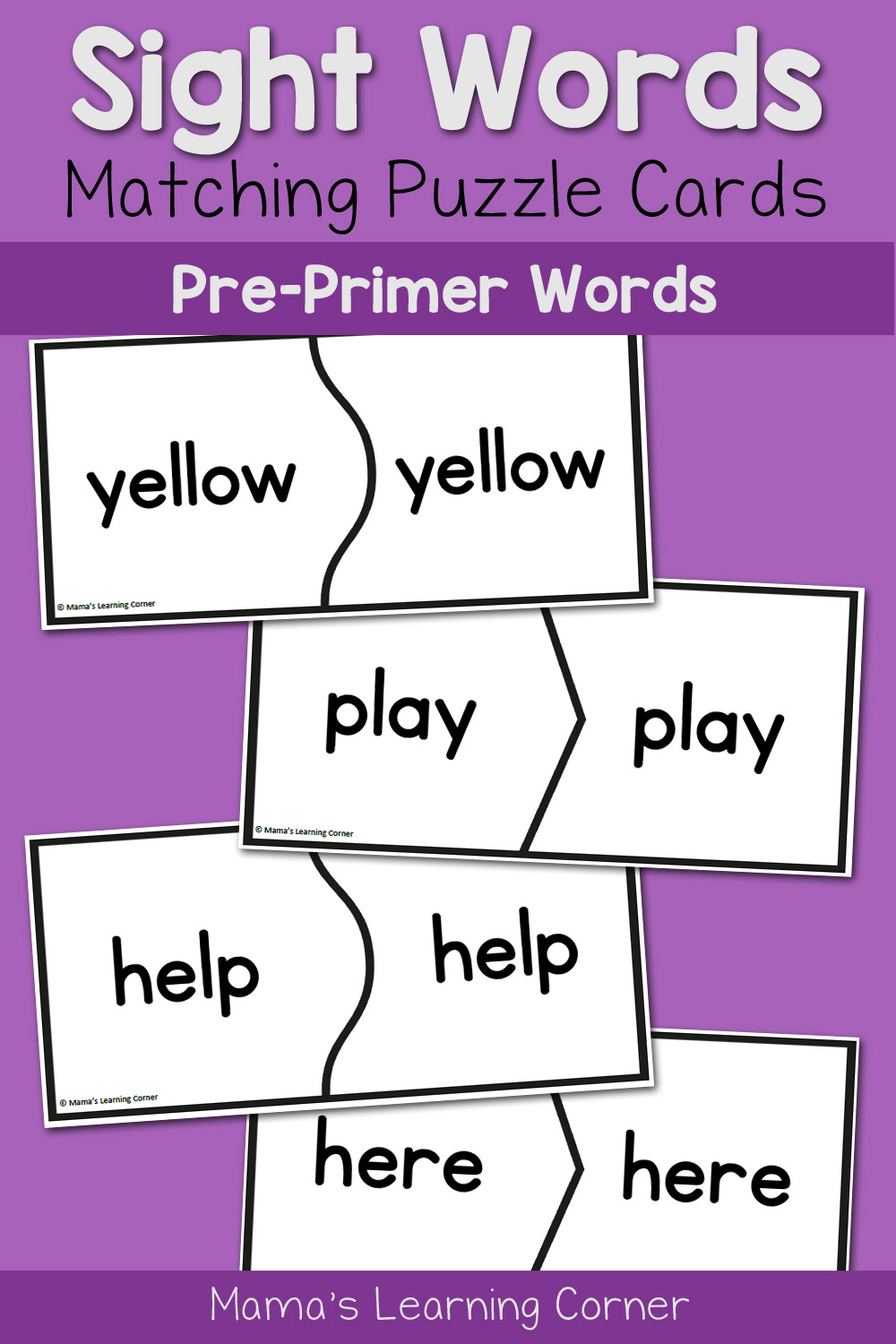

To play, choose a simple sight word like “at” or “had.” Then, see how many other words you can make by changing just one letter. This game is perfect for kids who are just starting to learn sight words. Tools like Seesaw are incredible for keeping portfolios of student work via video and other mediums. Save these in a digital or paper portfolio throughout the year to measure growth. Or give students a seasonal topic with words and a few sight words. Give students a list of sight words and have them generate a story with a drawing.
Preschool sight words list free#
JournalingĪlthough open journaling or free writing may seem a little advanced for kindergarteners, you’ll be surprised with how much they can write even in the beginning stages. Playdough is also a great medium for stamping letters to form sight words. Use Manipulatives to Form Lettersįor kinesthetic learners, using tangible items to physically form words can be an important way to show what they know! Try using Wikki Stix, playdough, or bendable straws to form words on mats or flat surfaces. The feel of the rough sand or salt helps kinesthetic learners memorize the words. Using flash cards, have students turn over a card and draw the letters for the word in the box. One additional benefit is that the shaving cream acts as a soap and cleans up your table top!Ī sand or salt box is another great tool to use, but a little less messy than shaving cream. Just wipe down the tables and spray clean. Save money on supplies by checking out a local dollar store or buying in bulk at a warehouse club store.Ĭlean up is easy. Sometimes learning is messy! Break out the shaving cream on desks and tables, and have your students write out their sight words with their fingers. Try a variation by having students write the words along with an X or O on the board. Kids love to play Tic-Tac-Toe! Add a twist by having the student read a sight word and use it in a sentence or read and spell it before adding an X or O to the board. Or for an easier version, have players read and spell the words while moving blocks.ĭownload the game rules from. Playing the normal Jenga rules, where a player removes a block from the tower and places it on top, have the student who removes the block successfully use the sight word in a sentence before the next player takes their turn. Start by writing a high-frequency word on each block. Turn a classic block building game, like Jenga, into a way for students to learn their sight words. Here are 5 sight word activities for kindergarteners that help young learners remember high-frequency words while having fun! 1. 5 Hands-on Sight Word Activities for Kindergarten Parents can also easily learn to do this routine at home with flash cards.Īll students will also benefit from using more hands-on sight word activities during your word work stations. You can do a read-spell-read routine whole class and in small groups. There are a variety of ways for students to learn sight words. Don’t waste valuable time on teaching students to memorize decodable words if you don’t have to. as they progress through the reading program.
Preschool sight words list how to#
If you are teaching a phonics-based reading program alongside teaching students to memorize sight words, then they will learn how to decode and, had, last, then, with, not, much, etc.

Since it takes students so long to learn sight words, you might consider limiting sight word instruction to words that are common and irregular or not decodable. While Dolch and Fry’s are some of the more common lists, each reading program seems to develop its own list. If your school or district is not providing a list words, you can find various lists online, including Dolch Lists and Fry’s Lists. If your school district is assessing a list of words, consider that your list. Well, there’s a couple of different answers. Which words should you consider sight words? Words like, and, that, as, on, in are all decodable words, but are also often taught as sight words. Those are often called high frequency words, although I have found that “sight words” and “high frequency words” are terms that are used interchangeably. Some words that we consider sight words are decodable words, but occur frequently. They cannot be decoded using general phonics patterns. Words like the, of, you, was are all words that need to be memorized and recognized by sight. While learning to read sight words is only one component of reading development, it is a necessary and important component. Learning to read is complicated and intricate, especially for kindergarten students. And what better way to learn sight words than with some fun sight word games that don’t require worksheets? Background about Learning Sight Words

For many kids, sight words are one of the first steps in learning to read.


 0 kommentar(er)
0 kommentar(er)
